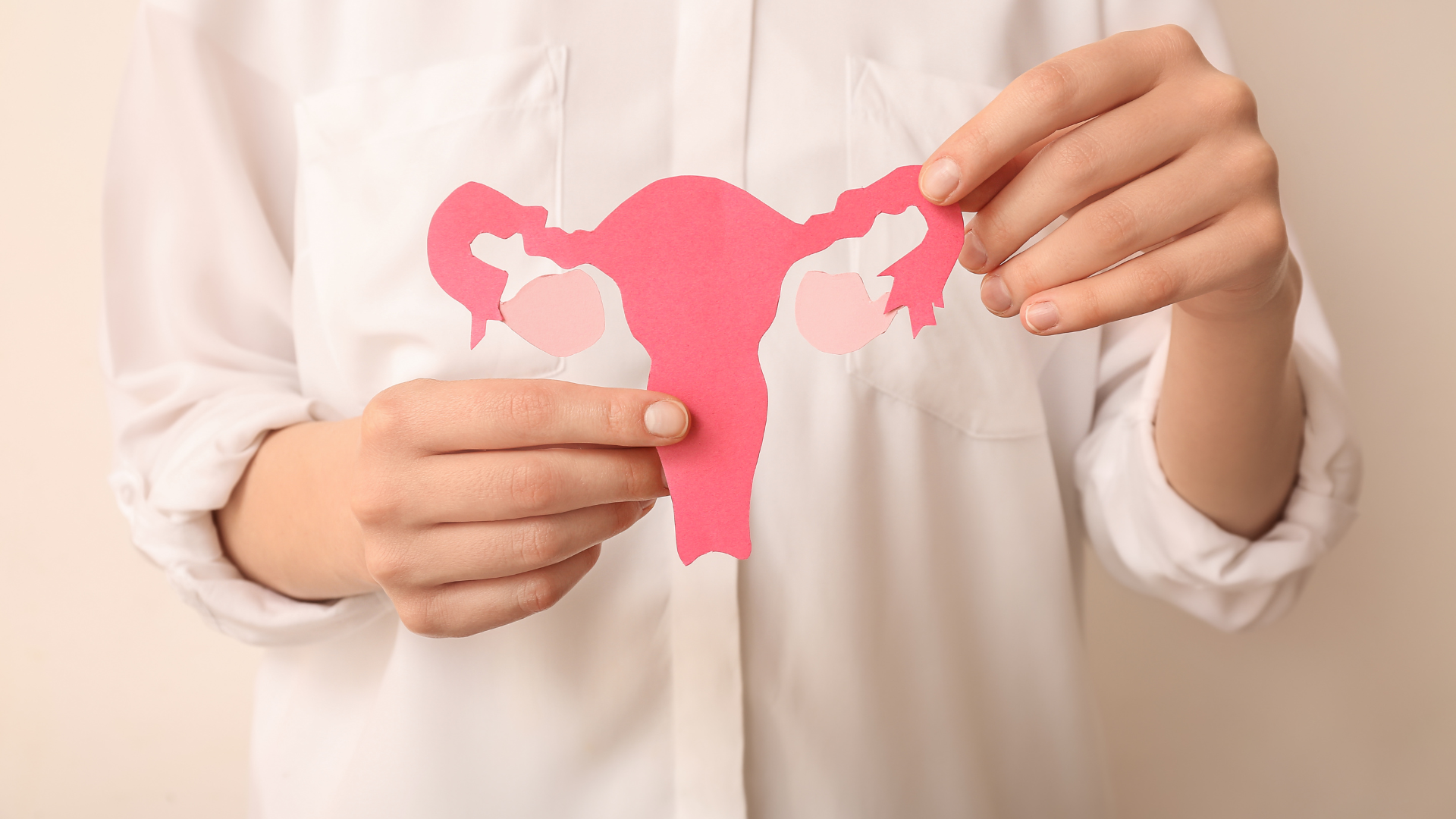
Hormones are vital in managing bodily functions like mood, metabolism, and reproductive health. When hormone levels are out of balance, issues such as irregular menstrual cycles, mood swings, and conditions like polycystic ovary syndrome (PCOS) can arise. To address these imbalances, hormonal therapies, including intrauterine devices (IUDs) that release progestin, are frequently utilized for effective management.
Mirena, a hormonal IUD, delivers levonorgestrel, a type of progestin, directly into the uterus. This targeted release not only prevents pregnancy but also helps manage symptoms associated with hormone-related conditions. This focused delivery system sets Mirena apart, offering unique therapeutic and contraceptive benefits.
In this article, we will delve into the relationship between Mirena and hormones, its key advantages, and potential side effects.
Key Takeaways
- Mirena is a hormonal IUD that delivers levonorgestrel directly into the uterus to prevent pregnancy and manage symptoms associated with hormone-related conditions.
- The localized release of levonorgestrel primarily affects the reproductive tract, resulting in changes in menstrual cycles and minimal systemic hormone levels compared to oral contraceptives.
- Mirena’s hormone delivery system has benefits such as lighter periods, potential cessation of menstruation, and long-lasting effects on menstrual cycles for up to eight years.
- It provides relief for conditions such as heavy periods, endometriosis, and adenomyosis by reducing menstrual blood loss and alleviating pain.
About: DoctorMedica is your trusted supplier of top-quality dermal fillers, viscosupplements, and more for your medical practice. We offer genuine products from leading brands at the lowest prices in the market. If you’re looking to buy Mirena wholesale for your practice, the sales representatives at Doctor Medica can give you guidance.
How Mirena Works with Hormones

Levonorgestrel plays a significant role in Mirena’s operation. This synthetic hormone thickens the cervical mucus and thins the uterine lining, which helps prevent pregnancy. Levonorgestrel primarily works locally within the uterus, which can sometimes stop ovulation, making it hard for sperm to reach an egg.
Mirena releases levonorgestrel directly into the uterus, resulting in minimal systemic hormone levels compared to oral contraceptives. This localized action primarily affects the reproductive tract, leading to changes in menstrual cycles, such as lighter periods or amenorrhea (absence of menstruation). While some users may experience side effects like acne or bacterial vaginosis, these often subside after the device is removed.
Unlike systemic hormonal contraceptives circulating throughout the body, Mirena’s localized hormone release results in lower overall hormone exposure. Studies indicate that reproductive hormone levels, such as estrogen and systemic progesterone, remain largely unaffected, with minimal differences between Mirena users and those who do not use hormonal birth control.
Benefits of Mirena’s Hormone Delivery

Mirena’s hormone delivery system directly impacts menstrual cycles, often resulting in lighter periods and, for some, the complete cessation of menstruation. This is particularly beneficial for those who struggle with heavy menstrual bleeding, as it can significantly reduce the volume and duration of periods.
Since the Mirena IUD can be used for up to eight years, its long-lasting effects on menstrual cycles provide sustained relief and convenience for users, minimizing the need for other treatments or frequent interventions.
Symptom Relief for Conditions like Heavy Periods and Endometriosis
Mirena’s targeted release of levonorgestrel offers significant relief for women dealing with conditions such as heavy periods, endometriosis, and adenomyosis. By thinning the uterine lining, Mirena reduces menstrual blood loss, which is especially helpful for those suffering from menorrhagia. In cases of endometriosis, Mirena helps alleviate pain by suppressing the growth of endometrial tissue outside the uterus, providing a non-surgical management option for persistent symptoms.
The sustained hormone release over how long Mirena IUD lasts ensures ongoing symptom control, improving the quality of life for many women.
Hormonal Side Effects and Mirena

The Mirena IUD is known for its ability to provide effective contraception with fewer hormonal side effects compared to other hormonal contraceptives. Unlike oral contraceptives that distribute hormones throughout the entire body, Mirena releases a small amount of levonorgestrel directly into the uterus. This localized hormone delivery minimizes the impact on the body’s overall hormone levels.
As a result, many users experience fewer systemic side effects, making Mirena a preferred choice for those sensitive to hormonal fluctuations.
Managing Potential Side Effects
While there are few Mirena side effects, some users may still encounter certain challenges. It’s important to be aware of these potential side effects and know how to manage them effectively:
- Headaches: Some users may experience headaches. Keeping a headache diary can help identify triggers and patterns, allowing for better management and treatment.
- Acne: Hormonal changes can sometimes lead to acne. Adopting a skin-friendly routine and consulting with a dermatologist can help manage this condition.
- Breast Tenderness: Breast tenderness is a common side effect. Using warm compresses and wearing supportive bras can provide relief.
- Irregular Bleeding: Irregular bleeding or spotting is typical in the initial months after insertion but usually improves over time. It’s important to reassure users that this is a common and temporary side effect.
- Mood Changes: Some individuals may experience mood changes, including depression or anxiety. Monitoring mood and seeking support from healthcare providers can help manage these symptoms, especially for those with a history of mood disorders.
Effectiveness of Mirena’s Hormonal Component
After the Mirena IUD insertion, the device releases a small amount of levonorgestrel, a hormone that thickens cervical mucus to prevent sperm from reaching the egg and thins the uterine lining to inhibit implantation. This dual action makes Mirena one of the most reliable forms of long-term contraception available, with a success rate of over 99%.
In addition to its contraceptive benefits, Mirena is also effective in managing various gynecological conditions. It is commonly used to treat heavy menstrual bleeding (menorrhagia) by reducing menstrual flow and alleviating associated symptoms.
Mirena is also beneficial for individuals with endometriosis, as it helps to reduce the growth of endometrial tissue outside the uterus, decreasing pain and bleeding. This makes Mirena a versatile option for both contraception and the management of specific gynecological issues.
Conclusion
Mirena effectively works with your body’s hormones to prevent pregnancy and manage certain health conditions by releasing levonorgestrel directly into the uterus. This localized hormone delivery minimizes systemic exposure, targeting only where it’s needed most.
While some may worry about side effects, Mirena often causes fewer hormonal disturbances than other contraceptive methods. It offers high efficacy in preventing pregnancy and provides significant benefits, such as lighter periods and relief from conditions like endometriosis.
Overall, Mirena’s hormone delivery system offers a unique and valuable approach to contraception and symptom management, making it a beneficial option for many women.
FAQs
1. What’s the link between Mirena and hormones?
Mirena is a type of hormonal intrauterine device (IUD) that releases a hormone called levonorgestrel into your body.
2. How does Mirena affect my body’s hormones?
The hormone released by Mirena, levonorgestrel, can alter your menstrual cycle and prevent pregnancy by influencing how your body handles eggs and sperm.
3. Can using Mirena cause hormonal imbalance?
While some users may experience changes in their bodies due to the introduction of an external hormone, it doesn’t necessarily mean they have a hormonal imbalance. It’s best to consult with a healthcare professional for accurate information.
4. Are there any side effects related to the hormonal aspect of Mirena?
Yes, potential side effects include changes in menstrual patterns or mood swings, among others, due to the release of levonorgestrel from Mirena into your system.
References
Croft, A. M. (2020). Intrauterine devices (IUDs). In StatPearls. StatPearls Publishing. https://www.ncbi.nlm.nih.gov/books/NBK557403/
Jin, X. X., Sun, L., Lai, X. L., Li, J., Liang, M. L., & Ma, X. (2022). Effect of Mirena placement on reproductive hormone levels at different time intervals after artificial abortion. World journal of clinical cases, 10(2), 511–517. https://doi.org/10.12998/wjcc.v10.i2.511
Gemzell-Danielsson, K., Kubba, A., Caetano, C., Faustmann, T., Lukkari-Lax, E., & Heikinheimo, O. (2021). Thirty years of mirena: A story of innovation and change in women’s healthcare. Acta obstetricia et gynecologica Scandinavica, 100(4), 614–618. https://doi.org/10.1111/aogs.14110
Related Articles
Joanna Carr
Plasmolifting for Hair – A Revolutionary Treatment for Hair Regrowth
Discover Plasmolifting for hair, a revolutionary treatment for hair regrowth. This PRP-based therapy stimulates hair follicles, improves hair density,...
Joanna Carr
Bellast Filler Manufacturer – About Dongkook Pharmaceutical
Discover Bellast filler’s manufacturer, Dongkook Pharmaceutical. Learn about their expertise, innovative solutions, and commitment to high-quality aes...
Joanna Carr
Nucleofill vs Profhilo – Know the Difference
Nucleofill and Profhilo are popular skin rejuvenation treatments that work differently to improve skin quality.


